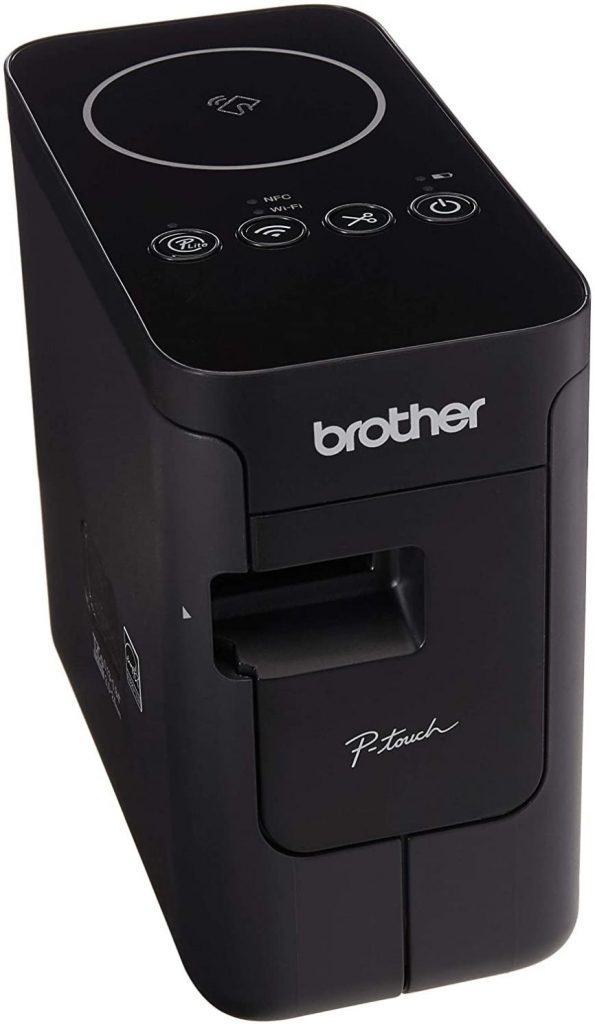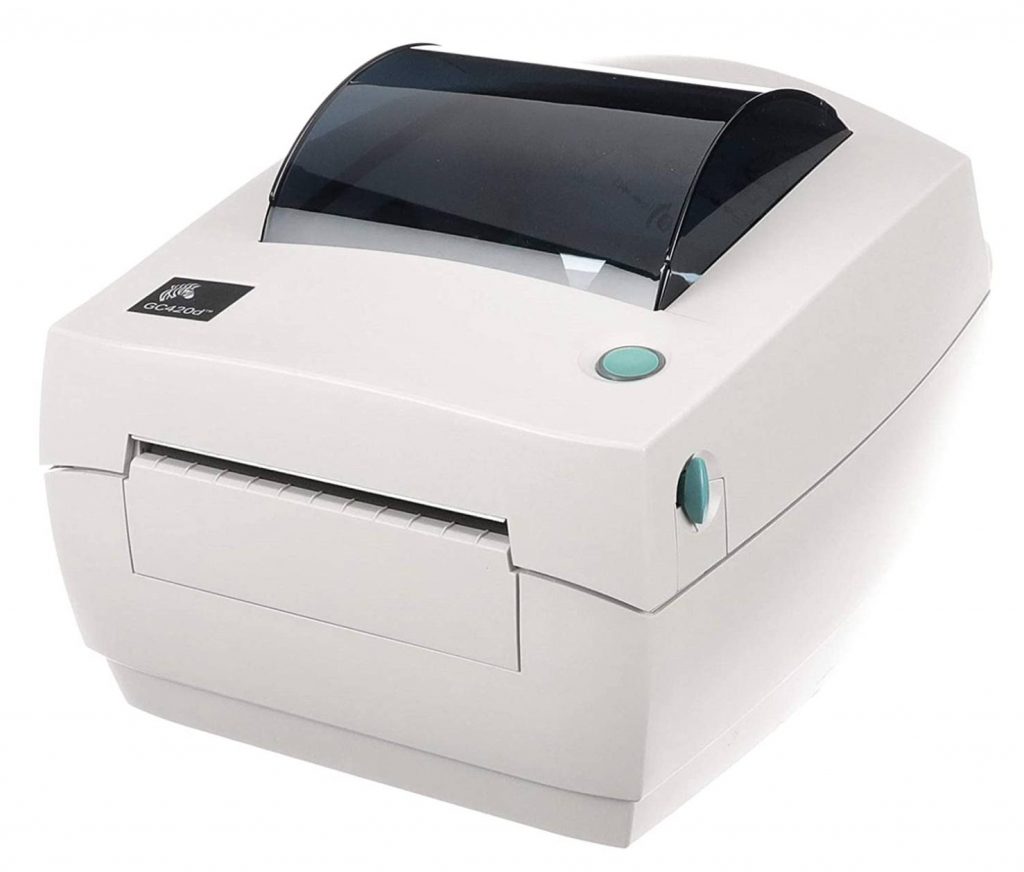Let us start the topic with some exciting statistics.
The world noticed 67% of online shopping after the pandemic. This report indicates a message for us. What is that? People are getting smarter day by day.
How? Simple!
The internet is now a hub of every piece of information. People have enough scope to research before buying a product. They take a basic knowledge of every product. Do you want proof?
You are one of them! You jumped here to get a basic or detailed idea of the thermal printer working procedure.
And guess what? We are ready to serve you your needs with bonus information. Stick with us till the end. You will get everything you need about the thermal printing process.
One more thing, we will share some more exciting information regarding the printer here. Trust us! Only 7% of people know this.
What Is A Thermal Printer?
We call this one of the greatest inventions in technology. Here is why? A thermal printer uses heat to print. The printhead produces the heat. When it places the heat over the thermal paper, the ink melts and turns into the commanded text.
Now you might have a question about the ink source of this printer. Thermal paper has built-in ink. It is called WAX ink.
When the heat falls over the paper, it melts and dries after completing the process. That is the complete explanation of thermal printing.
How Does A Thermal Printer Work
You already know the basics of thermal printers. Let’s dive deep into the thermal printer work process.
Thermal Printhead

Printhead creates the heat to melt the wax ink. It has a specific number of heating elements. These elements throw the heat, which transfers into the TTR and labels the substrate.
Ribbon Unwind
It is located before the label unwind section. The roll of ribbon unwind is to hold the TTR roll. What is TTR? Thermal transfer roll. It is wrapped up in flip cardboard. When the printhead throws the heat, this helps the ribbon to adjust the ink properly.
Label Unwind
It holds the label of your print. The role of this area is to hold the label and send it to the platen roller properly for the printing process.
Platen Roller
This one stays under the printhead. Platen roll guides TTR and labels with a small motor to reach under the printhead. And then the printhead heathen up the labels.
Ribbon Take-Up Spindle
The job of this area is to collect the disposal. What is the disposal? When TTR goes through the platen roll, a piece of ribbon completes the task.
Completed ribbon becomes wastage. Ribbon take-up spindles collect the wastage. It is usually spinning in the opposite direction.
Ribbon Sensor
People call it supervisor. Why? This component can sense the end of the TTR roll before its finish. The sensor informs the computer about the TTR roll update as soon as it detects it.
End Core Sensor
All thermal printers do not have ribbon sensors to detect the TTR limit. Some machine uses an End core sensor. This sensor helps to detect motion. The motion later helps to find the limit.
What Are Thermal Printers Used For?
Thermal printers are used for many purposes. Here are some common purposes. Read it below
Manufacturing
Compliance, quality assurance for products, tracking the product progress. Maintenance of different parts.
Hospitals
They use it for tracking patients, laboratory sampling, managing assets, and customer reports. Some healthcare companies use it for making wristband labels.
Government
Special people for the Government area use the following things: Id badges, system administration tags, emergency labels for in and out, etc.
Retail Shops
Product tag, POS receipt, cards for members and users. Inventory management persons.
Transport and Logistic Department
Packing slips, returning slips, Product tags, price tags, management receipts for inventory.

Advantages And Disadvantages Of A Thermal Printer
That’s the basic usage of thermal printers. Now let’s switch on to the advantages and disadvantages.
Advantages
Low Noise
Thermal printers are easy to handle of their limited functionality. The equipment inside the machines is not high-end like inkjet or laser. That is why it sounds low.
Quick Operating
Inkjet or Laser printers need long-formed instruction to operate. But this one is different. The instruction manual is short for its easy operation. So running the printer is comparatively easy.
Good Printing Speed
The print speed is higher than regular printers. Why? It does not use toner or ink. Printhead uses heat to print. That’s why the speed is high.
No Toner and Ink
As we said, the printer does not use toner or ink. It means you can save the toner and ink costs. Not only that but it also saves maintenance time and cost.
Durable
Thermal printers tend to live longer. The reason is their functionality. It does not have so much equipment. As a result, the body parts decay less than the usual printer.
Quality Print
Print quality is always high. Text quality is clear in this printer. The reason is a low character which leads to less pressure on the printhead.
Disadvantages
The Low Lifespan Of Paper
Thermal printing papers are short-lived paper. It spoils faster than regular pages because of the materials. This means the paper will not work equally with the expired paper.
Poor Image Quality
You won’t get an eye-catching image from this printer. The image quality relies on the paper highly because the ink stays inside the paper.
Problems With High Heat
You already know the function of the printhead. If it overheats, the chance of burning the paper is higher. This may cost heavily on paper purchases.
Expensive paper storage
The thermal paper needs sensitive care from the owner. Leaving this inside the printer for future use may cause paper wastage. The paper cannot handle the heat.
Mobile vs Desktop vs Industrial Thermal printers
Three of these printers follow the same work process. But the difference is the efficiency. You will read an overview of each printer with an example below.
Mobile Thermal Printers
It is also called a portable thermal printer. You can carry it on the go. Restaurants and small business owners prefer this device. The connectivity, print quality, and technical staff are easy to hand in this device.
Example

We used Brother P-Touch Edge PT-P750WVP. The device allows you to print laminated labels. You can even cut the tape easily. The text quality of this printer is tremendous. We also liked the connectivity feature.
You can easily connect to Wi-fi from your phone. The android app setup might be complex. Once you adjust it, then everything will be fine. Software for text editing is also flexible.
We prefer to do it on pc. You can accommodate the device beside your little space because of its palm-sized shape.
Desktop Thermal Printer:
It is comparatively heavier than the earlier one. You can print logos or design labels with this device. This feature is not available in mobile printers.
Desktop thermal printers are highly preferred for handling bulk work. Healthcare, transportation, and government bodies are used to having this device.
Example

Zebra GC420d Direct Thermal Printer was chosen from our panel for its diversified features. We liked the print quality.
The text was legible and noticeable from a considerable distance. Our team got the same experience on setup. The ZPL language helps a user to set up the total software easily.
Next is the weight: it is not more than 4 pounds. We could set it up in our tiny areas. The connectivity options for pc laptops and mobile were also flexible for us.
Industrial Thermal Printer
Most giant business companies are using this device. An industrial thermal printer can handle up to 2000 labels in each printing. Basically, the printing procedure is the same. But the difference is the outcome.
Example

Zebra ZT230 was our final product. The printer can print almost 1700 labels at a time. There was no drop in quality while printing. We printed 20+ labels with their logos. Each one showed great accuracy.
The Qr Code and barcode were clear. We tested the QR code accuracy through our app. It was clear to understand by the device’s camera.
Our major concern was setup. It took 30 seconds to set up the ribbon and label. Overall it is quite good for industrial applications.
Thermal Printers Vs Inkjet Printers
The difference between thermal and inkjet is huge. We are sharing some of the common differences here.
Image Quality
Inkjet printers have a better photo and logo outcome. But the result for thermal is not satisfying.
Here is why:
- Inkjet uses an ink variety, and the built-in nozzles spray those ink equally.
- The thermal printhead throws the heat over an inked paper which melts only. So, the chances of having a quality image are low.
Printing Process
Thermal printers use only heat to print. But the inkjet uses a variety of nozzles for printing. In fact, the inkjet printing process is more complicated than thermal.
Setup
The setup process of a thermal printer is easy. But the process for an inkjet printer is not easy. They have strict guidelines for a specific brand.
Direct Thermal Printing Vs Thermal Transfer Printing
There are two types of thermal printers. Direct and thermal transfer printer. Both of these have a considerable difference.
Printing Process
Direct thermal printers use direct heat. It does not require toner, ink, or ribbon. But thermal transfer paper uses raisin-based ink(wax) or ribbon, which melts through heat.
Duration
Thermal transfer printers are used for the long term. If you want to sustain your print after 6 or 8 months, thermal transfer paper is your best option. But the direct thermal printer is far from that. The print result does not stay more than 4 months.
Operating Process
Direct thermal printers are easy to operate. It is because of the less component and low functionality. On the other hand, thermal transfer printers are a bit tough to operate. The functionalities are rich.

FAQs
Which Thermal Printer Should I Choose?
It depends on the demand you need. Some use direct or some thermal transfer printers for their needs. We recommend you choose the duration first: Long-term and short-term.
Pick direct thermal for the short term. If your feedback needs to sustain more than 6 months, pick thermal transfer.
Do Thermal Printers Run Out Of Ink?
No, thermal printers do not run out of ink. This printer uses heat to melt the ink.
Can You Use A Regular Paper In A Thermal Printer?
No, it is not wise to use. The thermal printer has a special printer called thermal paper. The printers are also engineered to work on that paper.
Is A Laser Printer A Thermal Printer?
A laser printer is not a thermal printer. It is a toner-based printer. But a thermal printer is a heat-based printer.
Only 7% of People Know This
At this time, you might be wondering, what 7% knows? Well, the printing process is conducted by the components of a printer. Explaining the component work is the best way to explain how printers work.
We tried to share that in our article. Not only that, but we also shared some basic concerns with comparisons. Pretty sure! This will help you to find the right information. Remember, your buying decision will positively impact when you have real knowledge.
We hope for you a beautiful buying journey.